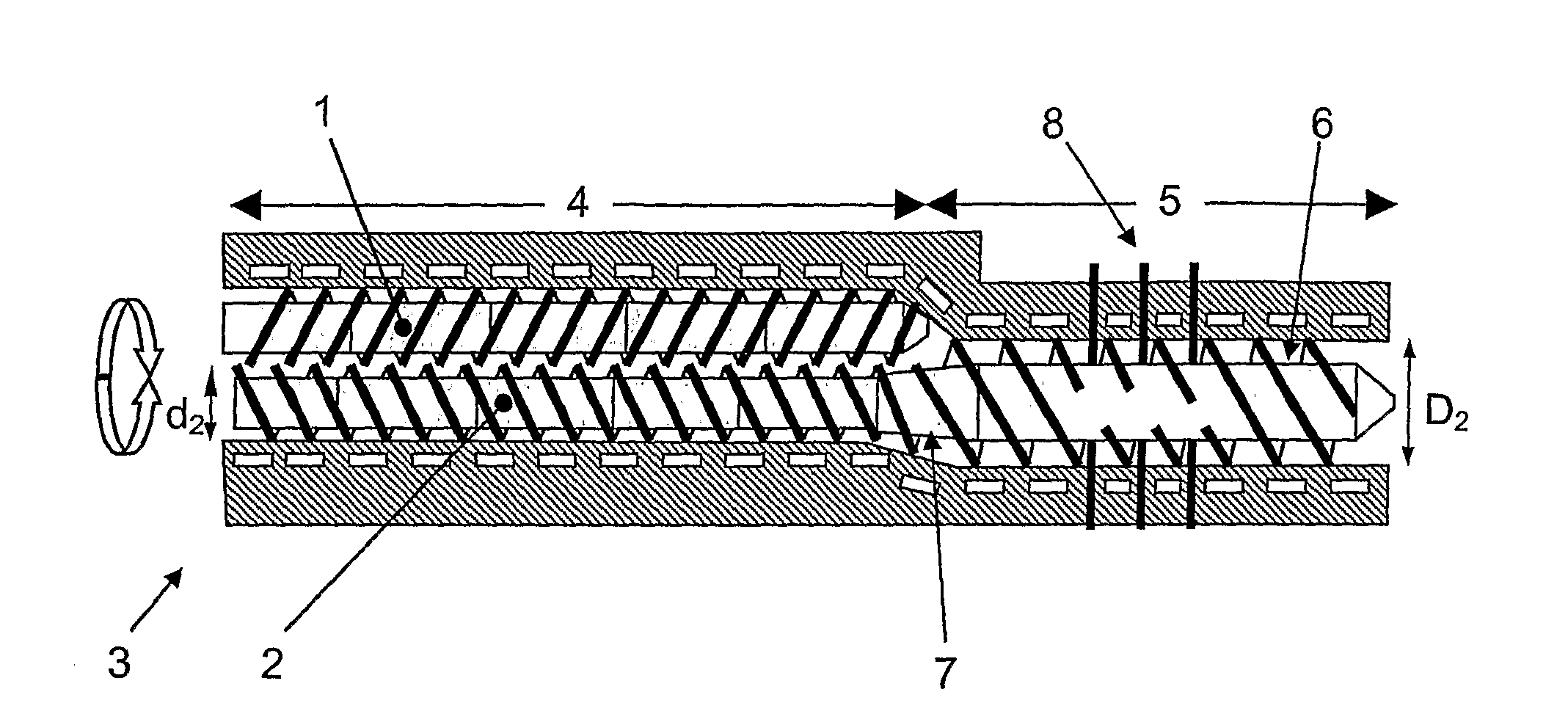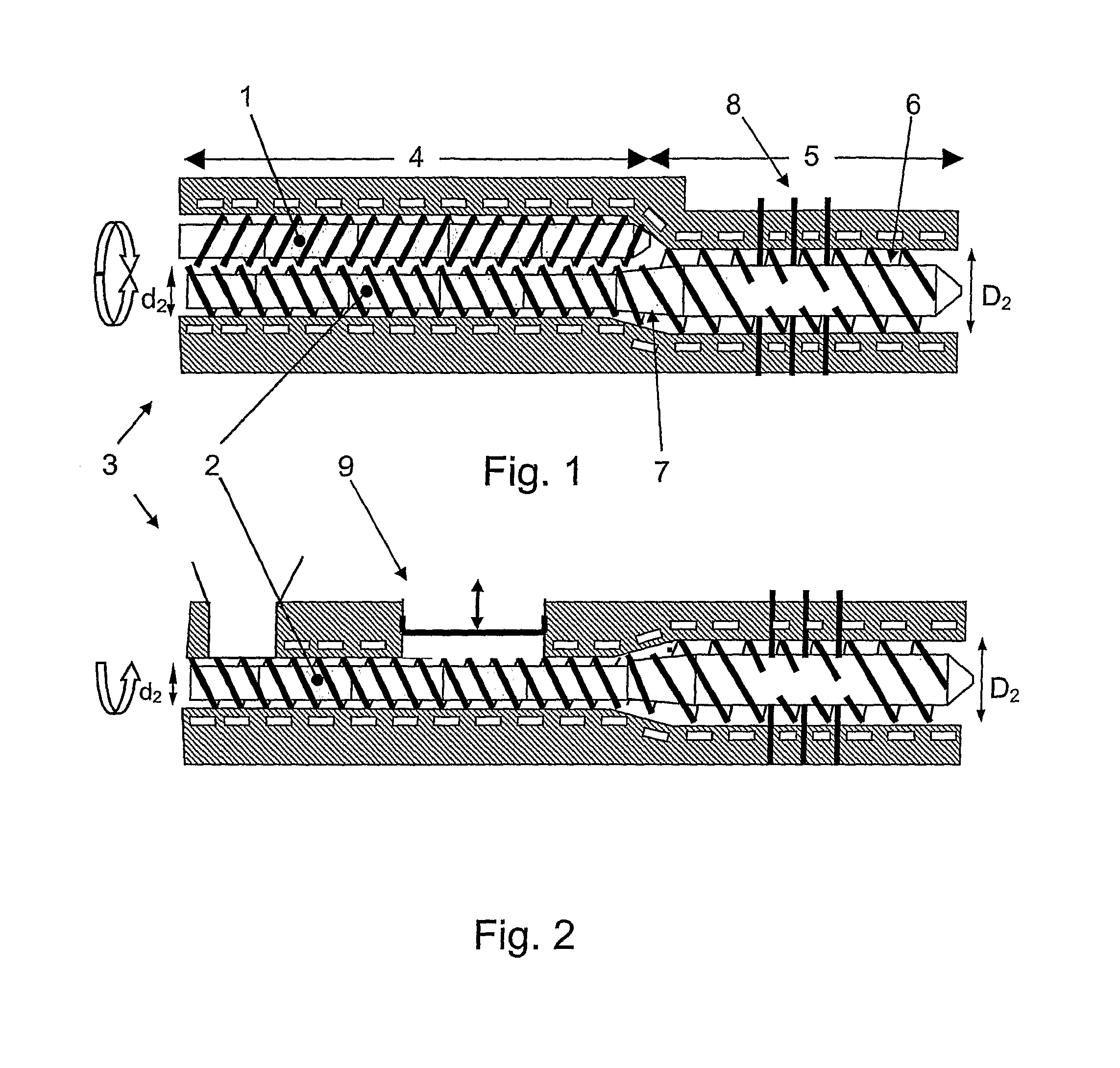Device and method for processing of polymer materials
a polymer material and processing device technology, applied in clay mixing apparatuses, rotary stirring mixers, mixers with horizontally mounted tools, etc., can solve the problems of limited heat removal, limited throughput, and high labor intensity of the system
- Summary
- Abstract
- Description
- Claims
- Application Information
AI Technical Summary
Benefits of technology
Problems solved by technology
Method used
Image
Examples
Embodiment Construction
[0042]The device 3 according to the invention is described in greater detail hereinbelow with reference to FIGS. 1 and 2, which show, schematically, on the one hand a plan view and on the other hand a side view of the device 3, in the form of an extruder, for processing polymer materials, in particular rubber, equipped with a first screw 1 and a second screw 2. The second screw 2 is longer than the first screw 1. In particular, therefore, the device 3 has a first region 4 which includes both screws 1, 2 and is limited by the end of the first screw 1, and a second region 5 adjoining the first region 4. This second region 5 accordingly corresponds substantially to a portion 6 of the second screw 2 that projects with respect to the first screw 1. In the first region 4, the two screws 1, 2 are located next to one another in the form of a twin screw. They are driven in opposite directions, the screws 1, 2 being arranged next to one another so that they do not mesh but are merely tangenti...
PUM
| Property | Measurement | Unit |
|---|---|---|
| Temperature | aaaaa | aaaaa |
| Length | aaaaa | aaaaa |
| Pressure | aaaaa | aaaaa |
Abstract
Description
Claims
Application Information
 Login to View More
Login to View More - R&D Engineer
- R&D Manager
- IP Professional
- Industry Leading Data Capabilities
- Powerful AI technology
- Patent DNA Extraction
Browse by: Latest US Patents, China's latest patents, Technical Efficacy Thesaurus, Application Domain, Technology Topic, Popular Technical Reports.
© 2024 PatSnap. All rights reserved.Legal|Privacy policy|Modern Slavery Act Transparency Statement|Sitemap|About US| Contact US: help@patsnap.com









